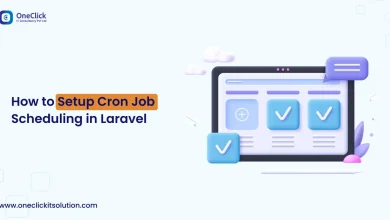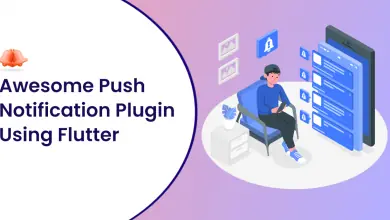The Ultimate Guide to Web Application in 2024

Introduction
Web applications have changed the way we do business and it’s only getting better than the older days. As time goes on, web application technologies are becoming more and more capable of not only replacing desktop software but also exceeding its capabilities in many cases. In fact, in only five years we’ve already seen huge advances in the capabilities of a web applications to do almost anything their desktop counterparts can do and much more on top of that.
In this ultimate guide to web application development in 2024, we’ll take a look at what the future holds for this fast-moving industry and how you can get your business ahead of the curve.
What is a Web Application?
A web app is any software that can be used online, i.e. it is downloaded and installed on a computer or smartphone through a browser instead of being installed via an executable file.
Web applications can either be hosted on remote servers or run from the device itself, as they often use built-in functions such as geolocation, accelerometer, and microphone to function properly without an internet connection.
In Web Application Development Frameworks ASP.NET is a powerful web application framework within the .NET ecosystem. It enables developers to build dynamic and interactive web applications with features like server-side rendering, model-view-controller (MVC) architecture, and support for various web technologies such as HTML, CSS, and JavaScript.
What is Web Application Development?
Web application development is a form of software development that creates applications that run on a web browser, such as Gmail or Facebook. HTML, CSS, and JavaScript (JS) are used by web developers to create these applications.

Differences between – Web App vs Mobile Application
Mobile apps and web apps are two trending platforms in the digital world. Here is the Web App vs Mobile Application.
- Mobile apps are designed to work on smartphones such as Android and iOS. However, web apps are designed to work on web browsers but web apps can also be mobile friendly and can be accessed with different devices.
- Mobile apps require approval to launch solutions on the play store and App Store, whereas web applications don’t require any approval from any platform.
- With web apps, entities can deliver more details about the business, but with mobile applications, there is limited information to provide to the users. Web app developers can integrate images, videos, and much more but mobile applications are better with different functionalities that include camera processing, GPS, and many more.
Types of Web Applications
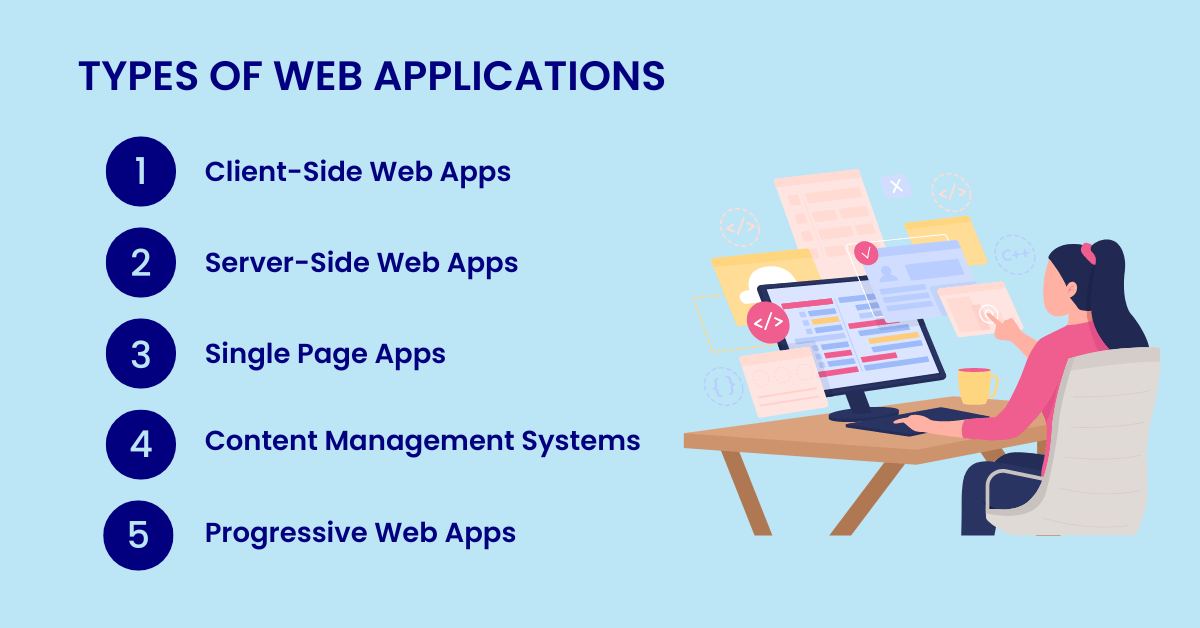
1. Client-Side Web Apps
A client-side web app is an application delivered from a server to a browser. Client-side apps can be created with JavaScript, and typically run on user devices locally. Unlike traditional thick client software, a user does not need to install anything for client-side apps; all required files are loaded directly from the server every time they use them.
2. Server-Side Web Apps
Server-side (static) websites don’t require a back-end server. They usually just take one or more files and send them to a browser using an HTTP server. If you want to use a database, you have to write code that will update and retrieve information from it.
Examples of such servers are Apache and Nginx. Such websites can be written in almost any programming language, however, there are many specific languages for those tasks such as PHP, Python, etc.
3. Single Page Apps
As opposed to traditional websites that are composed of multiple pages, single-page apps allow for a more dynamic, customized experience. The consumer interacts with these apps directly and can view all available content without having to click through different URLs or wait for things to load. Apps like Google Docs follow a single-page architecture, while other websites like Facebook are composed of many small single-page apps.
4. Content Management Systems
One thing that you might see in many web-development shops is a Content Management System (CMS). This software allows for easy updates to content on a website. Some examples include WordPress, Drupal, and Joomla.
By using a CMS, you can make small changes to your site without needing to contact anyone else or even know how to use code. These systems are becoming more and more common.
5. Progressive Web Apps
In a nutshell, Progressive Web Apps are user experiences that have most of the capabilities of native apps but are hosted in a browser. They’re built using technologies like HTML5, CSS3, and JavaScript.
Since they’re essentially built on top of existing standards, Progressive Web Apps are easier to develop than native apps. PWA can run on any mobile operating system — whether Android or iOS.
Benefits of Using Web Application
Web applications are a great way to help your business run more efficiently, reduce costs, and save time. If you’re considering whether or not you need to invest in web apps, here are some of the reasons why you should seriously consider it.
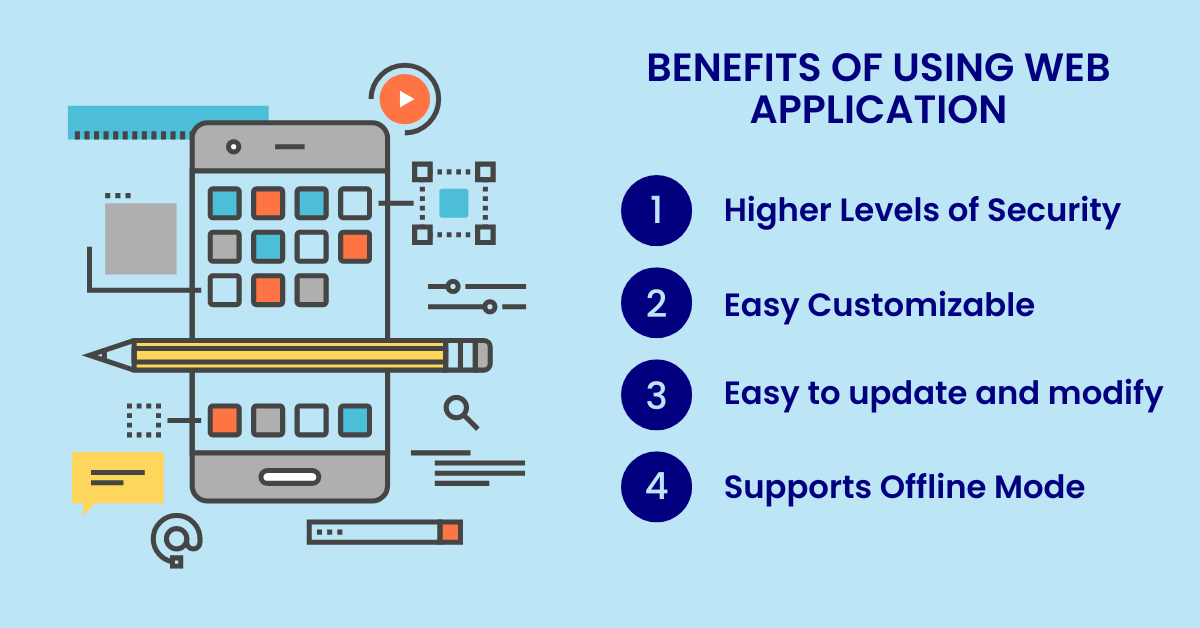
1. Higher Levels of Security
Web applications are often more secure than desktop applications due to their centralized servers. If an employee has administrative privileges on his computer, the user can gain access to sensitive files without any authorization whatsoever.
As web apps function remotely, they’re only accessible through a network not just another PC on your network. This eliminates any possibility of malware stealing information off your local hard drive and sending it out into cyberspace.
2. Easy Customisable
With web applications, you can easily make changes to any part of your website without having to turn to a developer. Small adjustments such as adding new pages or changing existing text on your site are so easy with web applications. This gives you more flexibility and control over how your web app is set up and maintained.
3. Easy to update and modify
Since web apps are run on servers and maintained in code, they are easily updated and added to. This means that clients, employees, or customers will always have access to all of your software needs, which is especially helpful for companies whose workers travel a lot. This is one of the major benefits of web applications.
4. Supports Offline Mode
Another great benefit of web applications is their ability to be used offline. In certain instances, an internet connection isn’t always available, such as when a company sends employees out into areas with limited service or for disaster relief efforts. With a web application, you can access your data in these situations.
How to Develop a Web Application?
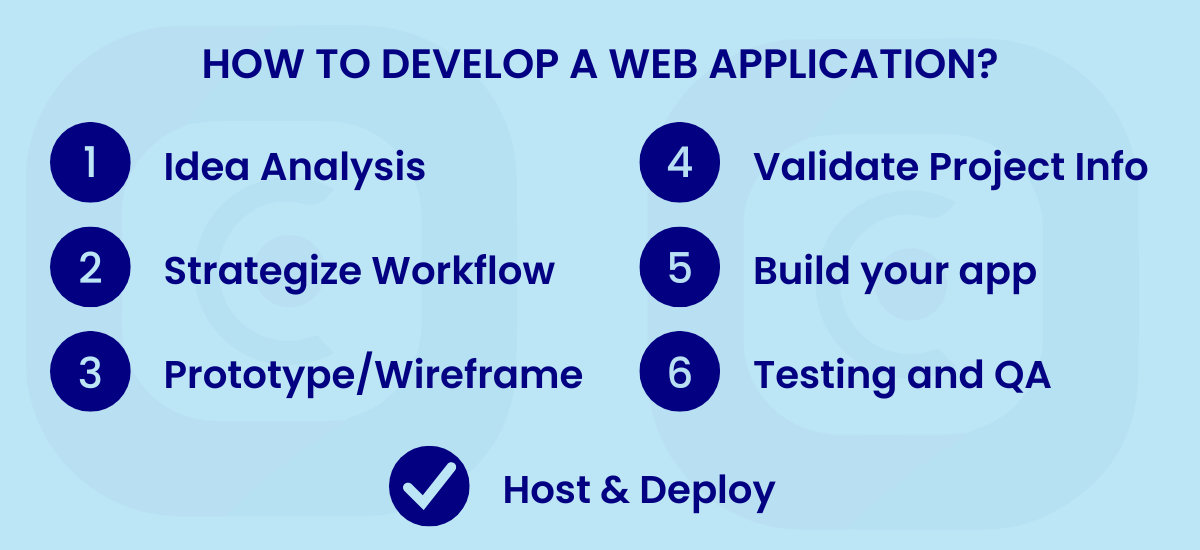
Step 1 – Idea Analysis
The foremost step is to analyze the idea of your project. Before opting for web-based applications, it is important to have a clear idea about the objectives and finalize that on the initial stage of your target audience. Moreover, it will help strategize the main motive of your project further.
Step 2 – Strategize the Workflow
Once you have analyzed the idea of your project. It is important to plan your workflow process that will help to streamline the web app development services procedure. Apart from this, it will also help to sort the challenges in the initial stage and find the ways to overcome them at the beginning only.
Step 3 – Prototype or Wireframe
Once you have finalized your web application development process. Plan a wireframe of your project that delivers a better understanding and constipation of your final project.
Moreover, prototyping of your project helps to design the development cycle and give the idea of the final product. It also helps to choose the best and most reliable technologies that companies should opt for in the development process.
Steps 4 – Validate your Project Information
Next, it is important to validate your project information with real users. Launching successful web applications requires knowing the target audience and who are interested in your project. It is all a bonus to know the functionality that attracts your customers.
Moreover, you can also get feedback from your clients that ensures to deliver successful outcomes.
Step 5 – Build your app
Once you gather information via a prototype, it’s important to start building your application. Consider the best backend and frontend technologies, as well as tools that support your project requirements, or hire web application developers that ensure to deliver the best outcome and speed up the development process.
Step 6 – Testing and Quality Assurance
Once you have finalized your web application development process, it’s time to opt for the testing process with different stages and methods. The testing process ensures to delivery of successful web applications in the market without any bugs and errors.
Step 7 – Host and Deploy your web application
Now, finally, it’s time to host and deploy your web application in the market. Hosting refers to running all your web apps on your server and allows you to deploy on different platforms successfully. Hire a remote developer for your web application development needs.
Technologies used in Web Application
Different technologies to consider to building a web app for multiple platforms
1. Frontend Development
The front end is an important platform through which users interact. It is also known as the user interface.
Technologies to use in Frontend Development –
- Angular
- Reactjs
- Vuejs
Angular, React.js, and Vue.js are popular JavaScript frameworks used for front-end development. As a developer specializing in these frameworks, your role involves creating interactive and dynamic user interfaces. Front-end developers possess a strong understanding of web technologies, good design principles, and problem-solving abilities to create visually appealing and functional user interfaces.
Angular and ReactJS are two popular frameworks used for front-end development. As an Angular or ReactJS developer, your role is to create user interfaces and enhance the overall user experience of web applications.
2. Backend Development
Backend is an important factor that allows users to interact or leverage the benefits of the frontend development services.
Technologies to use in Backend Development –
- Django & Python
- Node.js
- Ruby
- Java
3. Database
Database plays an imperative role in Web Application development. It appropriately organizes the data.
Different Databases that you should know
- MySQL
- PostgreSQL
- Oracle

Top 5 Popular Web Application
- Google Docs
- Notion
- Mailchimp
- Salesforce
- Basecamp
Cost of Web Application Development
The cost of web application development largely depends on its features and functionalities. Before you proceed to develop a web application, take a look at your business needs. This will help you evaluate which features would be relevant to your business objectives.
For example, if your company wants to increase its ROI on investment in training programs, it’s best to opt for custom-made solutions that are tailored toward meeting these specific goals and the cost varies to it.
Conclusion
A web application is a trending solution. Mid to large enterprises are making their way towards web & Enterprise application development due to its high performance, access to extensive functionality, and much more.
In this blog, we have created the full guide on how to make a web app that ensures to stay on the competitive edge. The above guide includes benefits, types, and costs that you should know before opting for web application development services.
Streamline employee management with our comprehensive app. Easily handle schedules, attendance, communication, and more. Boost productivity and efficiency
FAQs
A web application is an interactive application that supports different browsers and multiple devices that are built with multiple web technologies.
Many factors influence web application development costs including functionalities, performance, and technologies that you prefer to opt for.
There are different steps to launching a web application. Planning
– Prototype
– Design and coding
– Testing
– Deployment
– Launching
– Python
– Node.js
– Ruby
– Java


